 Portrait of Mimi (October 2019)
Portrait of Mimi (October 2019)
I’ve been despairing and then having no choice, accepting whatever happens and trying to go with the flow when I can. I can’t plan anymore beyond the next day. Yes, I’m watching myself disappear while still tracking the changes. I don’t fit in anywhere anymore. Being in the middle stages of whatever kind of dementia this is- Alzheimer’s, or Alzheimer’s and Vascular dementia. Maybe it will always be an unsolved mystery. But the despair I feel from not relating to what others are experiencing, has gotten me booted out from a form of support that I counted on and was part of my routine. I won’t say much more about this. I’m smart enough to know that this unraveling of my life is part of this disease. I am not at fault. I know what I know. I know that people with their varying early dementias, or mild cognitive impairment- those who can drive, those who travel independently, prepare meals and go to the market, pay their bills and oversee their finances…and do the things that normal people do…are not where I am in this disease. There is stigma and lack of empathy within the dementia community as well as outside of it. It doesn’t matter that my clarion call is truthful. Case closed.
So here I am again, after an absence of almost two months. I can still type with two fingers. I recognize when I’ve made a typo. I can still draw as evidenced by the portrait of my daughter. I can still use my iPhone. I can still still text. That’s become my mainstay and ultimately one the most important things I still retain. I’ve been texting with a lovely woman, Julie, in Alabama, who probably has a form of Frontotemporal dementia, who wrote me she can no longer speak, yet her writing is eloquent and clear, and she sends me videos and photographs, and she describes her life to me. This has become a friendship as we tell each other what our daily experiences are. She is honest and some of her days are difficult with pacing and agitation. Her husband is supportive and takes her for slow lazy country drives when he gets home from work. She sends me photos of complex jigsaw puzzles she has been working on, and tells me she was able to insert five pieces that day. She complains of fatigue. I commiserate. I have not had a solid 8 hours of sleep in over three years. I ask her if she sleeps. She said she doesn’t know and asks her husband. She thinks she sleeps but her husband says she doesn’t. I tell her my sleep is fragmented, broken, and she says that may be what is happening to her. She says she is up and down all night. I just lay there when I can’t sleep. I wait until it overtakes me. Glad to know one person who while experiencing “dementia” differently, is caring and reaching out to me. It helps us both to not feel isolated. She spends most of her days alone. She manages to get some things done. She wrote that she cleans her house in spurts, and then rests a lot in between. I am not able to clean. I wash the few dishes that I use, and can sometimes do the rest if there are others in the sink. I can still do my own laundry and can fold the clothes and put them away where I know they are going to be. If any of my things are moved to other drawers, I would not be able to find them. Our friendship is comprised of checking in with each other daily by text and commiserating about how it’s going. She lives in a beautiful house with lots of land and two dogs and manages somehow to be alone most of the time, waiting for her husband to return from work. I on the other hand can’t stand being alone all day. I need the motivation of having another around me to give me the oomph to do anything, whether it is getting dressed or going out. I’ve also been texting daily with another friend, Susan, who I met on Dementia Alliance International zoom chat support group. She doesn’t have a definitive diagnosis but has been struggling with symptoms of PD and fears it may also be Lewy Bodies. These are my two texting friends. Two wonderful women who are in their early sixties who are coping with the onset of dementia. Very different symptoms, very different coping skills. Just to have them in my life as people I can be honest with, away from the herd of judgement and yes, stigma, that exists is heartening.
Caarin and Jeanne have been taking me to Lincoln Center Moments, the program for people with dementia. I push myself to be ready to go. On Friday, Caarin came at noon and because she drove there and parked in a parking garage across the street, we were able to get there before one o’clock. Jeanne doesn’t drive, so we have to take an Uber.
I’ve been able to go to the last three programs because of them. When I went with Jeanne we saw short documentary portraits of historic libraries in New York City and clips from the 1960’s neighborhood around Lincoln Center library. We saw that neighborhood when the great jazz pianist Thelonious Monk lived across the street and clips of him playing live at The Village Gate. Last week when I went with Caarin, we enjoyed a concert by Steve Herring and friends, with their amazing operatic voices and classical musicianship, that showed that the sixth decade of each century in the modern world seems to be a particularly vibrant time that pushes musical innovation toward the next century. They played and sang opera from the 1660’s and 1760’s (JC Bach and Mozart), and from the 1860’s (Franz Liszt and Johannes Brahms). Steve Herring and another musician performed a piece called Clapping Music, by the contemporary composer Steve Reich written in the 1960’s, for two people clapping. They sang One Hand, One Heart from West Side Story. The lyrics by Leonard Bernstein and Stephen Sondheim, is a duet sung by the characters Maria and Tony, while they have a make believe wedding. Steve Herring then closed with a rousing rendition of I Feel Good, by James Brown, the progenitor of funk music, and often referred to as the “Godfather of Soul”. On Friday, Caarin drove to Lincoln Center again and we heard the consummate vocals and guitar and piano of Celisse Henderson and her band.
 Evan Leslie presents a film about The Lincoln Center library in the 1960’s. This is an image of jazz pianist Thelonious Monk who lived in that neighborhood. San Juan Hill was a community in what is now occupied by Lincoln Center. It’s residents were mostly African American, African Caribbean, and Puerto Rican, and comprised one of the largest black communities in New York before World War 1.
Evan Leslie presents a film about The Lincoln Center library in the 1960’s. This is an image of jazz pianist Thelonious Monk who lived in that neighborhood. San Juan Hill was a community in what is now occupied by Lincoln Center. It’s residents were mostly African American, African Caribbean, and Puerto Rican, and comprised one of the largest black communities in New York before World War 1.
 Steve Herring singing James Brown’s, I Feel Good.
Steve Herring singing James Brown’s, I Feel Good.
 Celisse Henderson sings Aretha Franklin, Chain, Chain, Chain.
Celisse Henderson sings Aretha Franklin, Chain, Chain, Chain.
I stay for the after-program in which the people with dementia and their care partners are led in discussions, music making, singing and art making. I am always very observant to see if any of the people who have dementia participate. My comments are usually pretty off the wall and illicit a laugh from the art and music therapists who run the program. For instance when asked to complete the sentence – I am…, I proclaimed that I am atypical, vociferous (although I think vehement would have described me better), ferocious. The people with dementia in the after program did not speak for the most part, save for a woman who is 101 who clearly is in the throws of extreme old age rather than dementia. It is mainly the caregivers and companions who participate.
Then there’s still the trips to The Rubin Museum’s Mindful Connections program which my husband takes me to on the third Friday of the month. I look forward to these because I’m encouraged to participate. I’m one of the few with a neurodegenerative affliction who has something to say about the art. The last time I went though I was almost speechless when presented with this image. It kind of looks like what I feel like.
 UFO No. 3 2016 Acrylic, ink and gold pen on cotton Tsherin Sherpa
UFO No. 3 2016 Acrylic, ink and gold pen on cotton Tsherin Sherpa
*****************
Walking
To have a disease that impacts my physical mobility and speech is the biggest setback of this illness. To see that my mobility has declined so much in the last year is startling. Last year at this time, around Halloween, I was out and about taking photographs of children in their costumes, walking outside by myself, fully oriented to my location, able to cross the street alone, without anxiety and physically and emotionally confident. Now when I go out alone it is usually only around the block or to the park two blocks away, and back. When I go for walks on streets further away, it is always with my husband or my companion, Theresa. This is because of the changes in my mobility and also because my coordination and reflexes are slowed. No, I do not want to use a walker or rollator. Using a device to walk would not make it easier to cross the street or do the route that I still walk, which amounts to 1.8 miles. This town is filled with children on their scooters and people that ride their bicycles on the sidewalk. I can just envision a crash between a bike and a walker. I’m faster on foot. I want to avoid this sort of accident.
I push myself to go and get out of my house when I have the opportunity, and I am especially interested to see and experience new things, within reason. This is why I was thrilled when my niece Caarin drove me to her house which is around 13 miles away. She lives in an old Victorian three story shingled house with her husband Eric, which means there are a lot of stairs to climb. I climbed up the stairs to the entrance, then stepped inside and saw the steep staircases that leads to the next two floors. That staircases have become an obstacle is one of the startling facts of this illness. I can still climb stairs, but have to go slow and carefully, holding the banister. I used to bolt up stairs. I remember climbing two at a time only four years ago. She showed me the kitchen and living room and dining room with it’s Shaker style chairs on the first floor. I met her cute 2 year old little bulldog. Then I asked to see the rest of the house and we climbed the stairs to the second floor where she showed me her bedroom flanked by two authentic Noguchi lamps. Eric showed me the sitting room and pointed out a framed boyhood collection of superhero costumes, toy robots and movie posters from the 1940’s. Then Caarin showed me her studio where she knits and runs her knitting business, creating beautiful bold colored sweaters, ponchos, mittens, gloves and hats. She has 150 people creating her patterns all over the world!
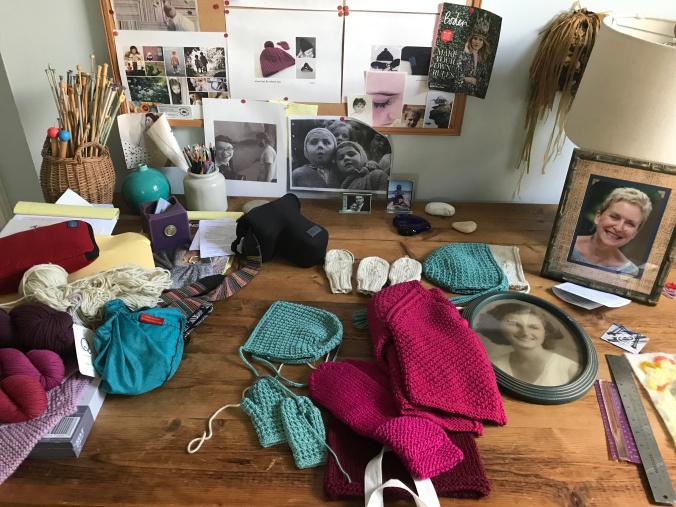 Caarin’s work table with samples of her knitting. On the table is a photograph of her late mother Carol (the woman who adopted her) who died three years ago, and a photograph of her grandmother, Charlotte.
Caarin’s work table with samples of her knitting. On the table is a photograph of her late mother Carol (the woman who adopted her) who died three years ago, and a photograph of her grandmother, Charlotte.
Then we climbed up to the third floor, where their kids have their bedrooms. Their children, Charlotte and Jasper, are now in college, and I felt like a spy deciphering their personalities from the contents in their rooms. Jasper is a wildly prolific artist, and his room is filled with his artwork, Charlotte’s bedroom is tidy with a Navaho rug and a few photographs. Another room between their bedrooms contains a sewing machine on a desk. Some of her photographs and drawings dot the walls.
**********************
 October 8 and 9 was Yom Kippur, the holiest day on the Jewish calendar. Jeanne accompanied me to the synagogue. Known as the Day of Atonement, I did not pray for myself to be inscribed, but prayed for my family- for my daughter, my son and his babies, my grandchildren and my husband.
October 8 and 9 was Yom Kippur, the holiest day on the Jewish calendar. Jeanne accompanied me to the synagogue. Known as the Day of Atonement, I did not pray for myself to be inscribed, but prayed for my family- for my daughter, my son and his babies, my grandchildren and my husband.
On the way home, as I walked carefully in the dark with Jeanne, we ran into Monique and her husband and mother, who is in her mid 70’s and has been diagnosed with Alzheimer’s. Her mom is thin and tall and there is no evidence of mobility decline. I observed her as she walked. Monique says she has no short term memory, and she could not have a conversation with her as she does with me. I ponder this. How is it that I who am about ten years younger than her mom, now have trouble walking while she appears to be unaffected? What I would give to not have had such a fast decline. It’s 3 years from diagnosis and I think it’s four years since this started. I am now 65 and a 1/2.
************************
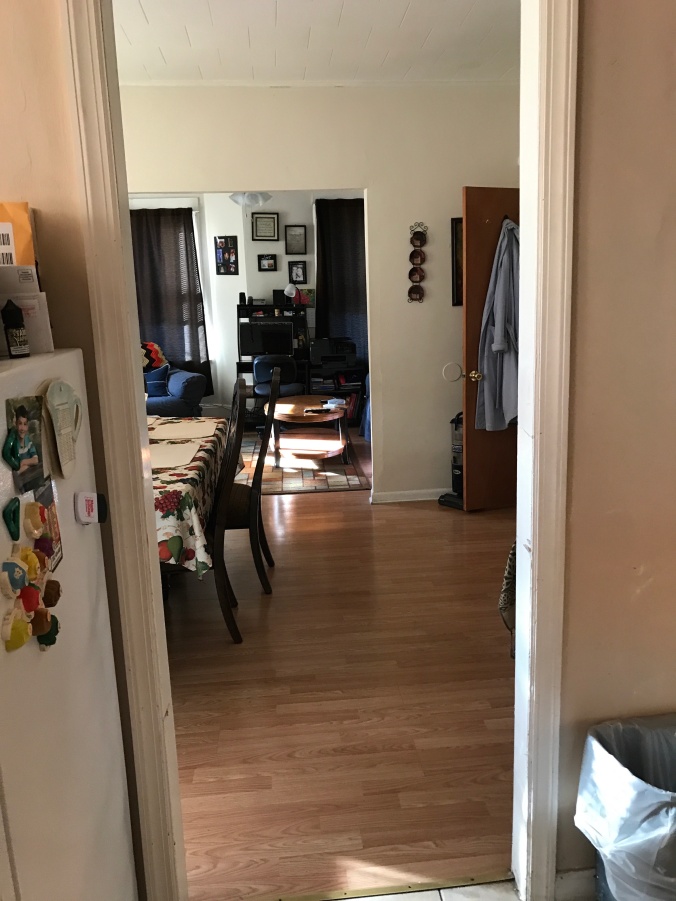 Theresa, my companion’s apartment in Bayonne.
Theresa, my companion’s apartment in Bayonne.
Last week Theresa, my companion/ home health aide, invited me to visit her apartment. She just bought a new car, and I told her I wanted to see where she lived. So she drove us to the New Jersey Turnpike, past the Liberty Science Center and Liberty State Park. She had met Monique on one of our walks, so I told her about the time in 2002 when Monique was a volunteer at an event held at that location that honored the filmmakers selected for the Back East Picture Show where my documentary Back to Gombin screened. My film did not win the award that evening. That went to the playwright Israel Horowitz for his documentary 3 Weeks After Paradise.
We drove on to Bayonne and Theresa parked near the Catholic church she goes to every day. She lives two blocks away and we walked to her building. Up a short flight of stairs to enter, and then up another flight to her apartment. she showed me her bedroom and the bedroom where her daughter Michelle who died only three months ago at the age of 37, used to sleep.
Life is so strange. Why are some fated for glory, some for doom? I was still striving to make movies when I became ill with this insidious disease. It just wasn’t meant to be.
So my hope and prayers are for the next generation and the next after that. My daughter, my son and his children. My daughter is a television and film producer and last week she produced a festival of women’s films at a movie theater in Manhattan. I did not attend because, with my now obvious decline it might have embarrassed her. I can no longer “dress up” and when I speak I stammer and my behavior is often odd. So I suggested that Caarin attend and she did and sent me a photograph of my beautiful daughter presenting and another photo of her greeting guests at what was a sold out event. My time is over, and the strange thing about this is I am watching myself end in slow motion.
 Returning from Theresa’s I pointed out this mural to her. It’s a 180 foot tall mural of David Bowie painted on the side of a building in Jersey City by Brazilian artist Eduardo Kobra. I once passed David Bowie briefly on the staircase at the old Whitney Museum, in the stairwell. He smiled and said hello. Now he is gone and I remember that moment. I saw him again at an exhibit of his friend, the musician, Lou Reed’s photographs. He stood with Lou chatting along with his wife, the model Iman, and and Lou Reed’s wife, the performance artist, Laurie Anderson. Now Lou Reed has passed away as well. If there IS a heaven, those are two I would like to hang out with. Maybe we could dance,
Returning from Theresa’s I pointed out this mural to her. It’s a 180 foot tall mural of David Bowie painted on the side of a building in Jersey City by Brazilian artist Eduardo Kobra. I once passed David Bowie briefly on the staircase at the old Whitney Museum, in the stairwell. He smiled and said hello. Now he is gone and I remember that moment. I saw him again at an exhibit of his friend, the musician, Lou Reed’s photographs. He stood with Lou chatting along with his wife, the model Iman, and and Lou Reed’s wife, the performance artist, Laurie Anderson. Now Lou Reed has passed away as well. If there IS a heaven, those are two I would like to hang out with. Maybe we could dance,
**************************
 Took this photograph of an old street sign in Hoboken enveloped by a tree while on a walk with my husband.
Took this photograph of an old street sign in Hoboken enveloped by a tree while on a walk with my husband.
**************************
More walking
Last Saturday I went for my last great walk. It revealed how limited my mobility is now but it was a beautiful day despite this. My husband drove us to the Hartshorn Arboretum and bird sanctuary. The foliage in the trees are changing color and autumn was blazing as the green gives way to red and gold. I was able to walk on flat and some of the slightly sloped hills. I was able to walk up and down the steps around the main buildings and along the path that encircled a much lower sloping hill with 3 miles of trails leading through the diversity of flora and fauna. I tried to walk through some of the trails with my husband, but when they became narrow and steep, I couldn’t manage it, and we had to turn back.
Before we left a lovely Asian man asked us if we’d like him to take our picture. My husband put his arm around my shoulder and we both smiled.

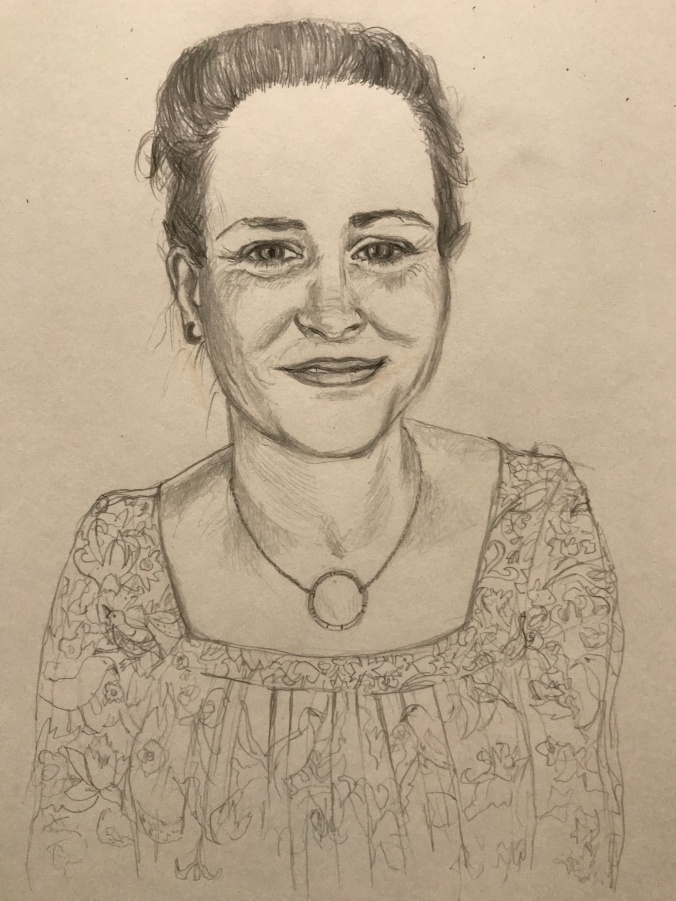 Portrait of Caarin – September 2019
Portrait of Caarin – September 2019
 My husband encouraged me to continue walking, and so we walked out onto the path that juts out onto the water. Then we headed home. I didn’t know that Stevens Institute had built a new structure to replace the rickety wooden staircase that connected the waterfront (which is 3 feet above sea level) to the campus that encompasses the acreage that is highest above sea level in Hoboken.
My husband encouraged me to continue walking, and so we walked out onto the path that juts out onto the water. Then we headed home. I didn’t know that Stevens Institute had built a new structure to replace the rickety wooden staircase that connected the waterfront (which is 3 feet above sea level) to the campus that encompasses the acreage that is highest above sea level in Hoboken.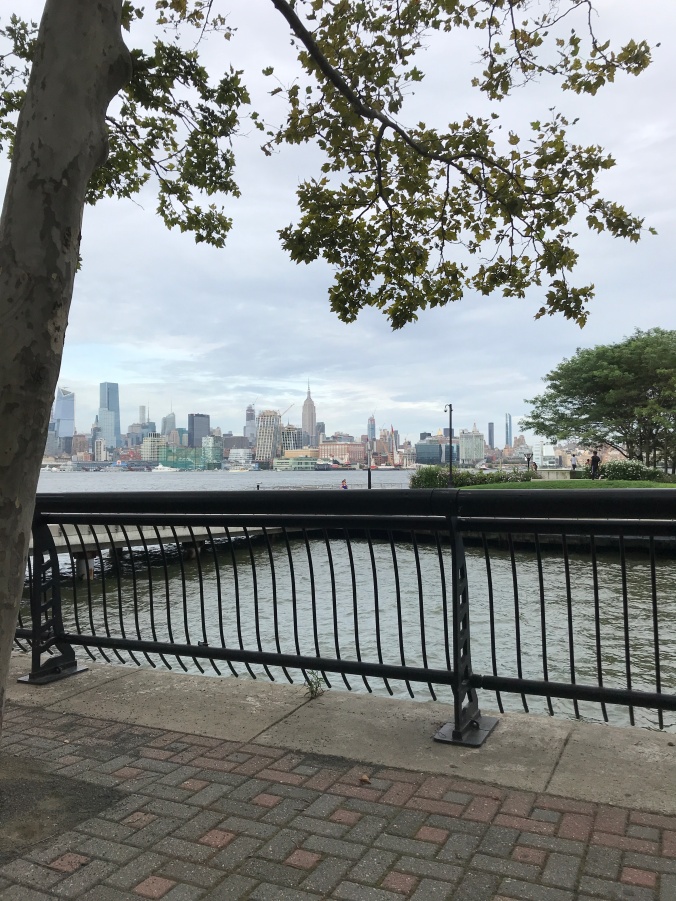
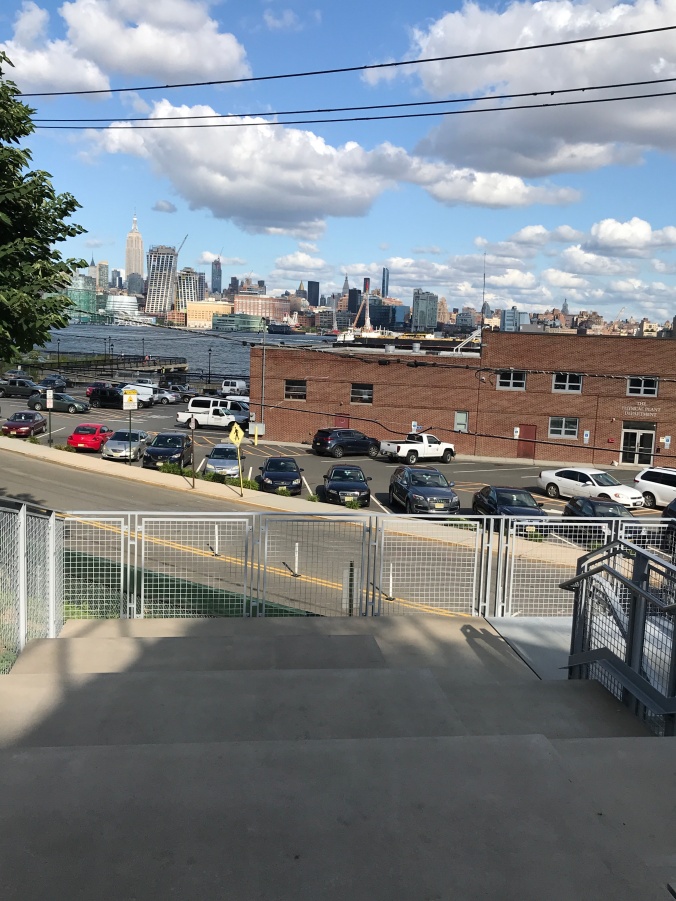
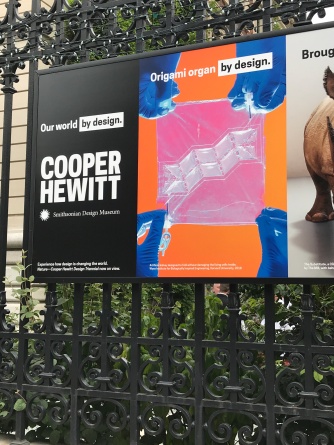


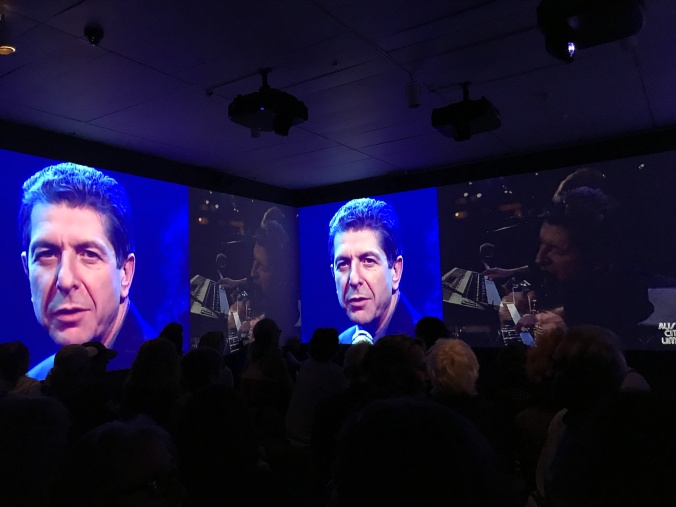





 I haven’t disappeared yet! I can still draw and write, although my motivation and ability to share has been tempered by a tumultuous month. I’ve been full of worry and woe, and haven’t wanted to share my personal life. Walking is far more difficult now, and I rarely go out alone now. I can still walk about a mile and half, but my gait is unbalanced. I ask my husband to hold my arm during our daily walks.
I haven’t disappeared yet! I can still draw and write, although my motivation and ability to share has been tempered by a tumultuous month. I’ve been full of worry and woe, and haven’t wanted to share my personal life. Walking is far more difficult now, and I rarely go out alone now. I can still walk about a mile and half, but my gait is unbalanced. I ask my husband to hold my arm during our daily walks. Sonia my late mother in her 20’s in Russia
Sonia my late mother in her 20’s in Russia My parents Michael and Sonia in 1975
My parents Michael and Sonia in 1975 My parents Michael and Sonia, my sister (the beauty) at 17 and me at age 10.
My parents Michael and Sonia, my sister (the beauty) at 17 and me at age 10.

 Double self portrait – Before and After
Double self portrait – Before and After



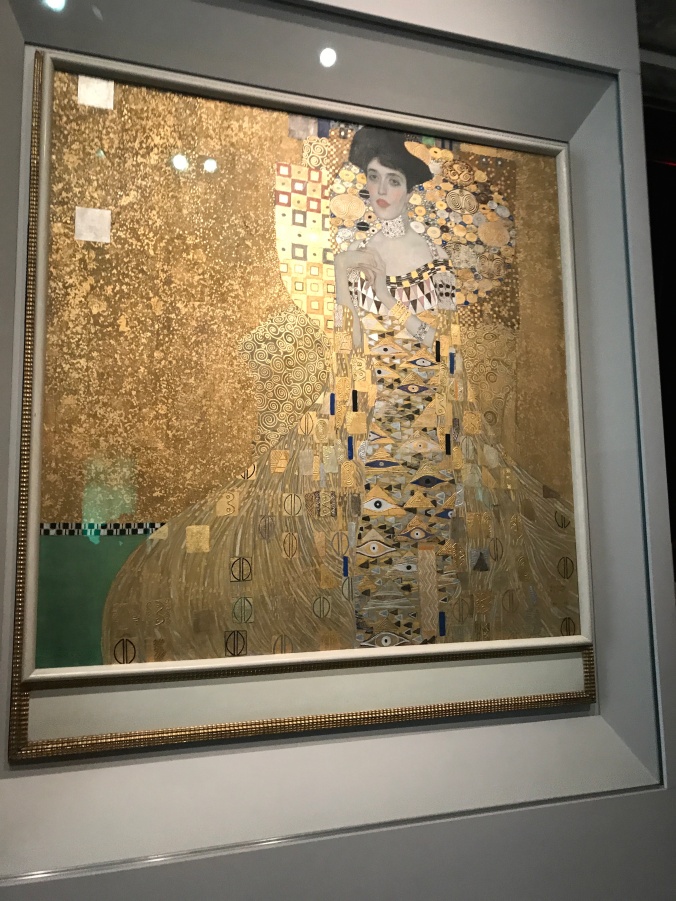 We stood near the painting. The room was crowded. I tried to take a photo and a guard told me photos were not allowed. I had already taken this one of Adele Bloch-Bauer by Gustave Klimpt. The jewel of the collection.
We stood near the painting. The room was crowded. I tried to take a photo and a guard told me photos were not allowed. I had already taken this one of Adele Bloch-Bauer by Gustave Klimpt. The jewel of the collection.

 There are two rabbis that I hold dear to me. One is in Poland and one lives in my city and visits me in my home, and welcomes me when I am able to make it to a service. The last time he came here, I asked him to take me for a walk. The usual route through the park and up to the viaduct and back. We spoke and he told me that during the time a person says Kaddish for a departed loved one (eleven months and twelve months if the person had committed many misdeeds), the soul of the departed is undergoing a cleansing. This period of cleansing prepares the soul to dwell with G-d. My children don’t know this, and I am writing it here to ask them and to ask my husband to please recite the Kaddish for me when I die. I ask that my two dear friends, the rabbi in Poland and the one who lives in my city and visits me, recite Kaddish for me after I die. I ask Jackie my dear friend to recite Kaddish for me after I die. I wish to dwell with G-d and for my soul to be cleansed.
There are two rabbis that I hold dear to me. One is in Poland and one lives in my city and visits me in my home, and welcomes me when I am able to make it to a service. The last time he came here, I asked him to take me for a walk. The usual route through the park and up to the viaduct and back. We spoke and he told me that during the time a person says Kaddish for a departed loved one (eleven months and twelve months if the person had committed many misdeeds), the soul of the departed is undergoing a cleansing. This period of cleansing prepares the soul to dwell with G-d. My children don’t know this, and I am writing it here to ask them and to ask my husband to please recite the Kaddish for me when I die. I ask that my two dear friends, the rabbi in Poland and the one who lives in my city and visits me, recite Kaddish for me after I die. I ask Jackie my dear friend to recite Kaddish for me after I die. I wish to dwell with G-d and for my soul to be cleansed. 

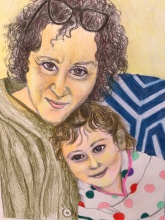


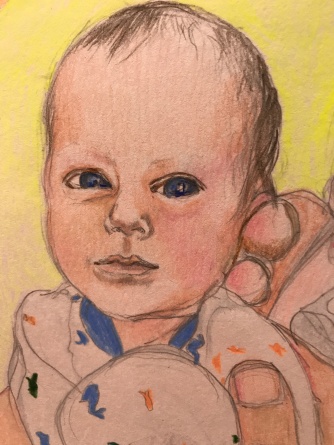



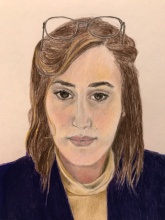

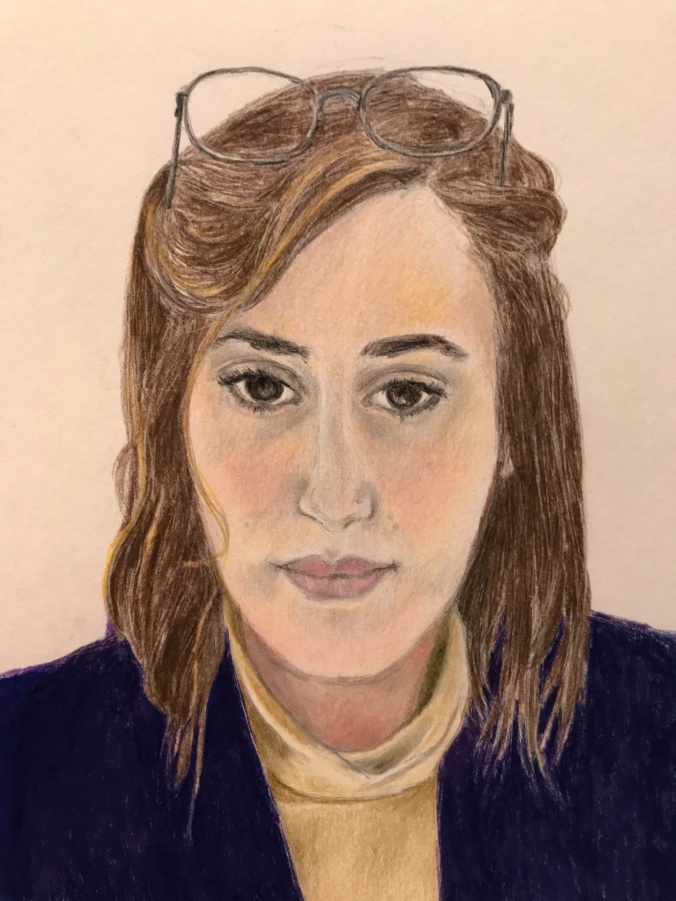 Portrait of Mimi
Portrait of Mimi
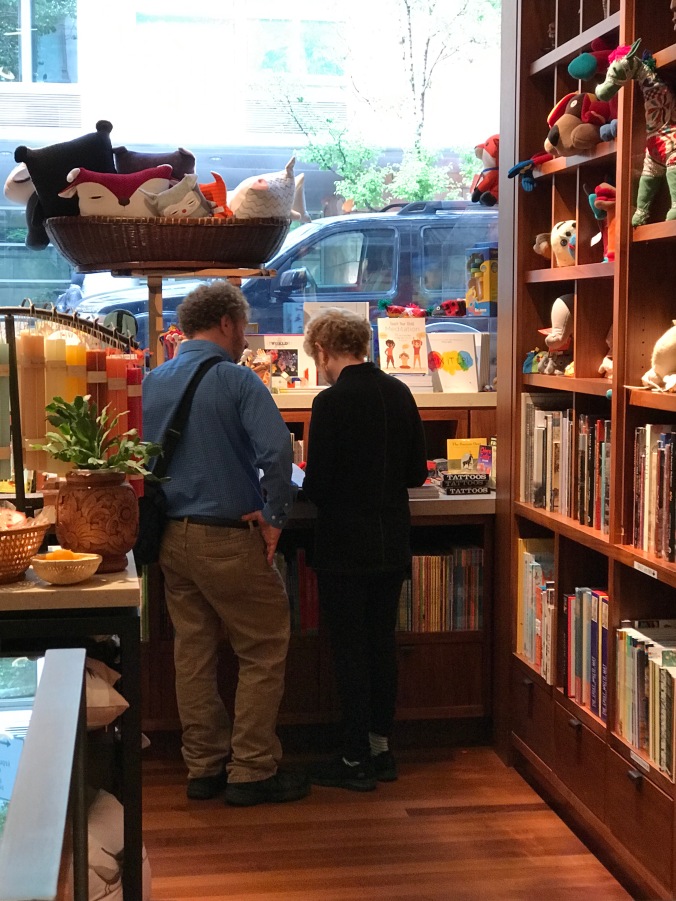


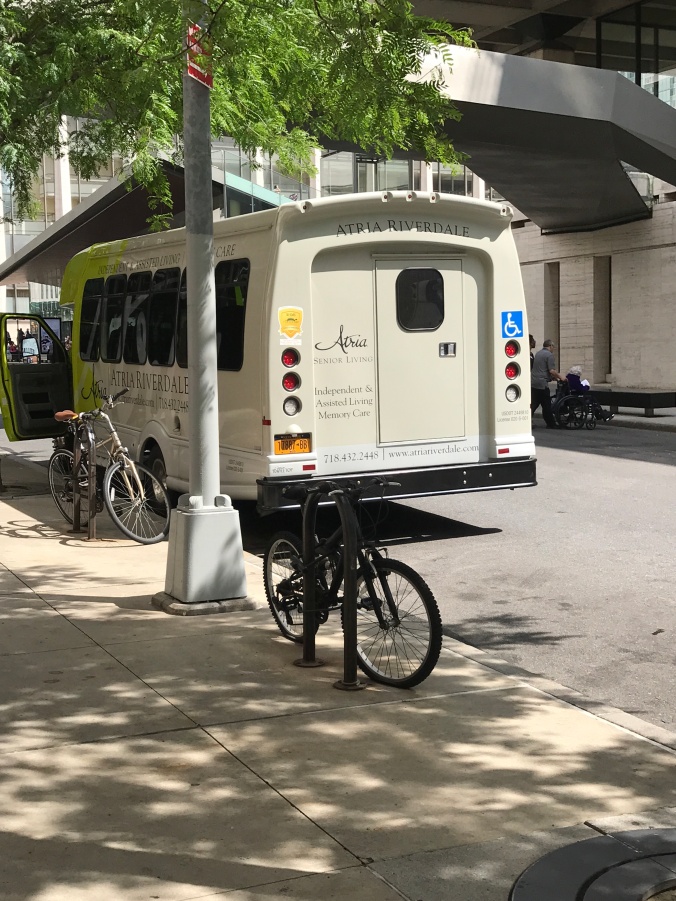



 Soren and Michael
Soren and Michael The brown scarf I am crocheting
The brown scarf I am crocheting
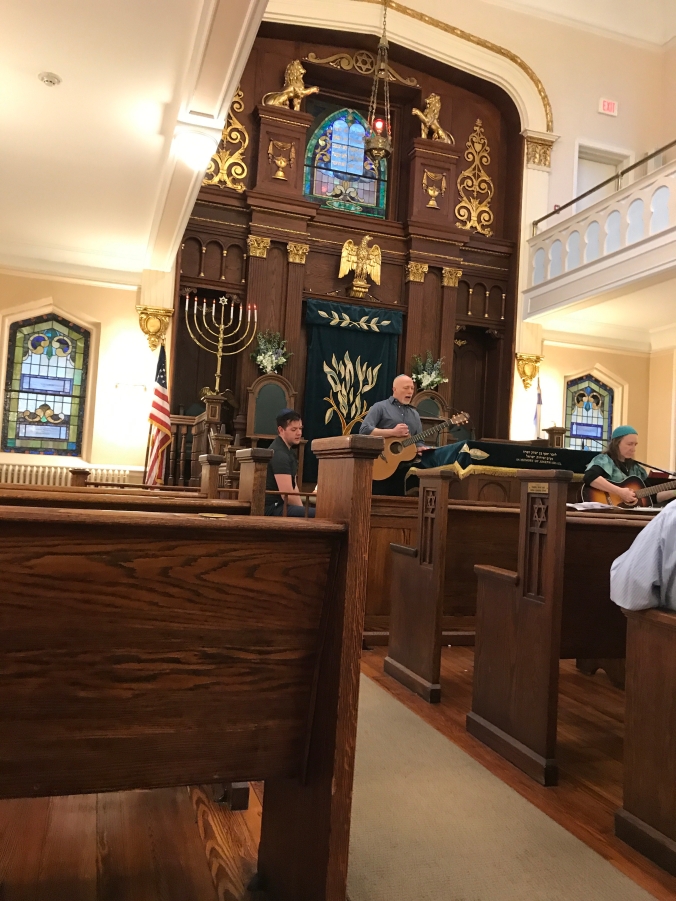 Musical Shabbat at USH
Musical Shabbat at USH Walking with Jeanne
Walking with Jeanne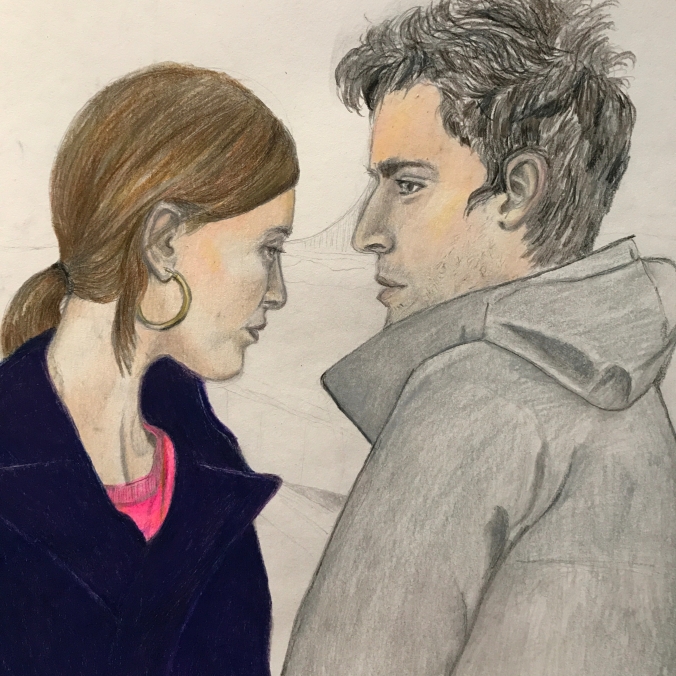 Portrait of Mimi and Dan
Portrait of Mimi and Dan



 Jeanne in her kitchen last week or was it two weeks ago?
Jeanne in her kitchen last week or was it two weeks ago?
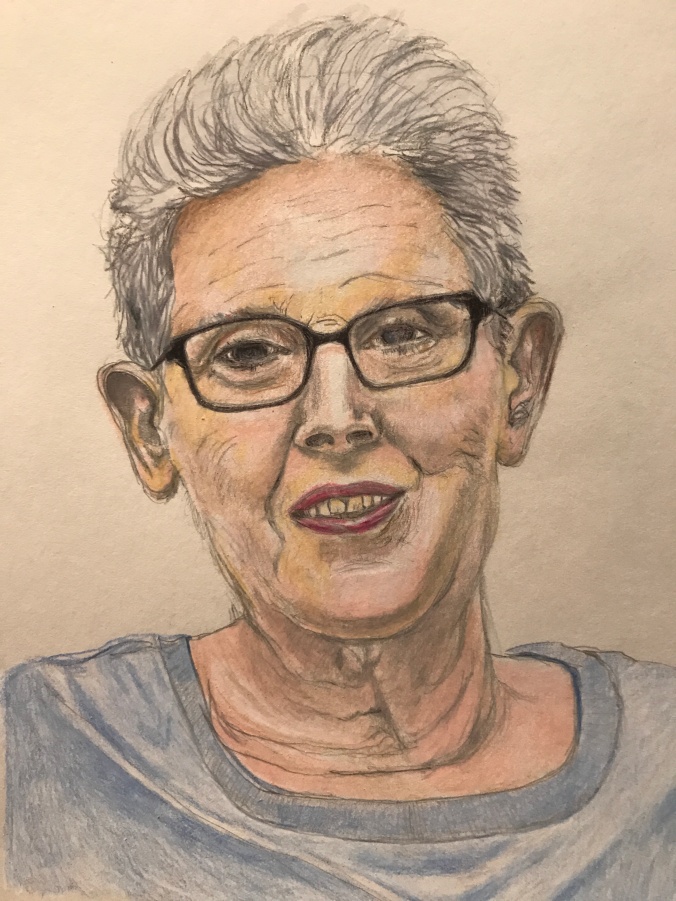 Portrait of Jeanne
Portrait of Jeanne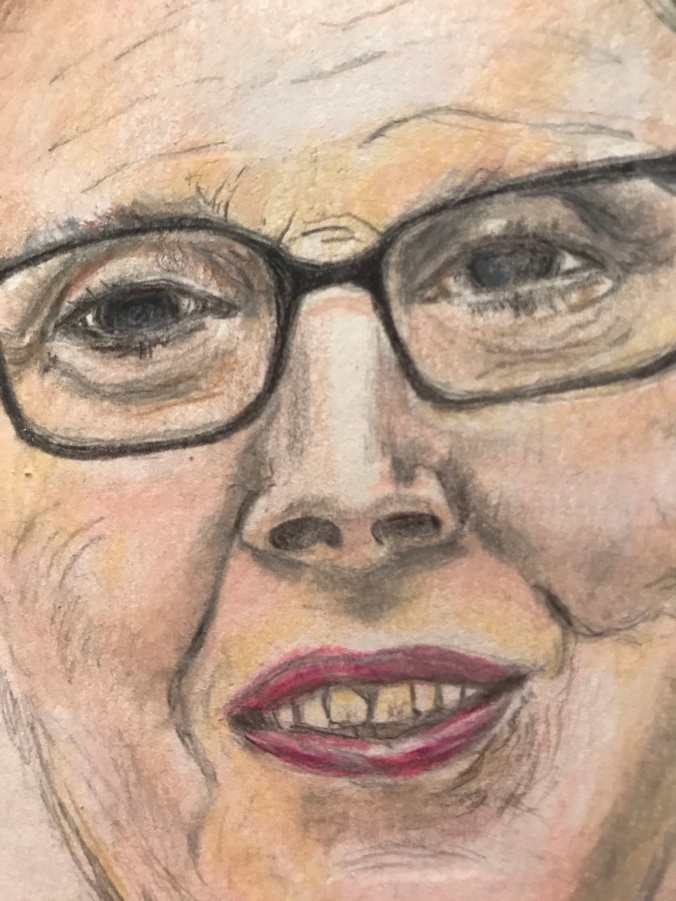
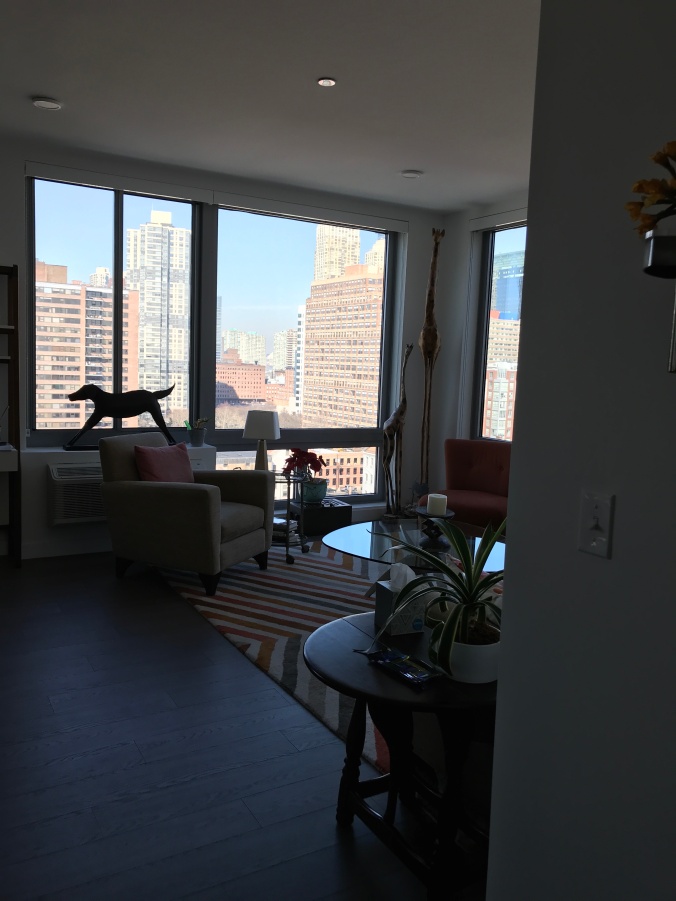
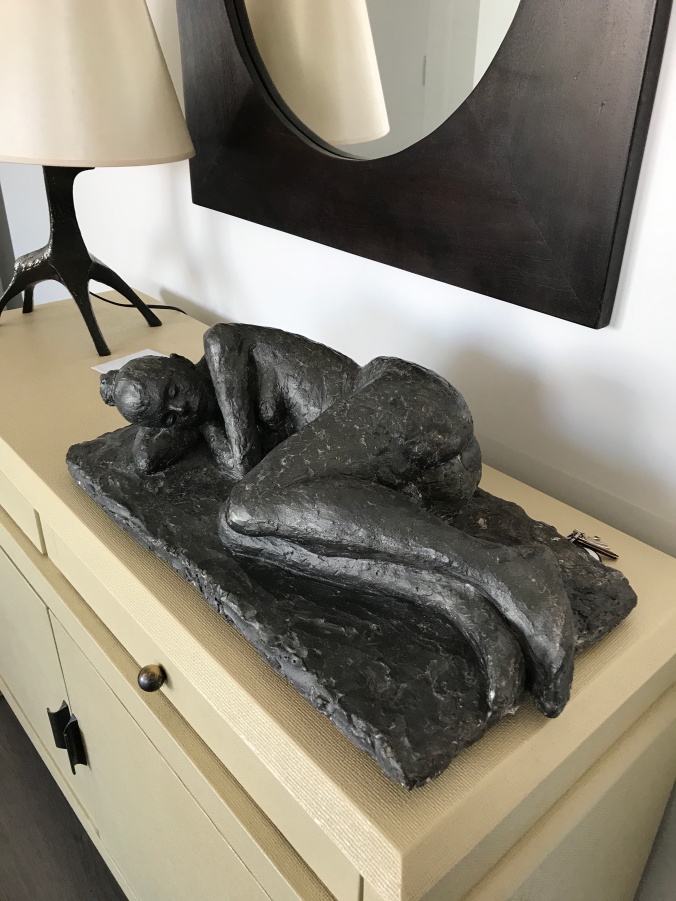 This is a sculpture of a reclining woman made by a female friend of Dina’s late mother.
This is a sculpture of a reclining woman made by a female friend of Dina’s late mother. A small seated bronze female figure by the same artist. Dina told me this her favorite piece.
A small seated bronze female figure by the same artist. Dina told me this her favorite piece.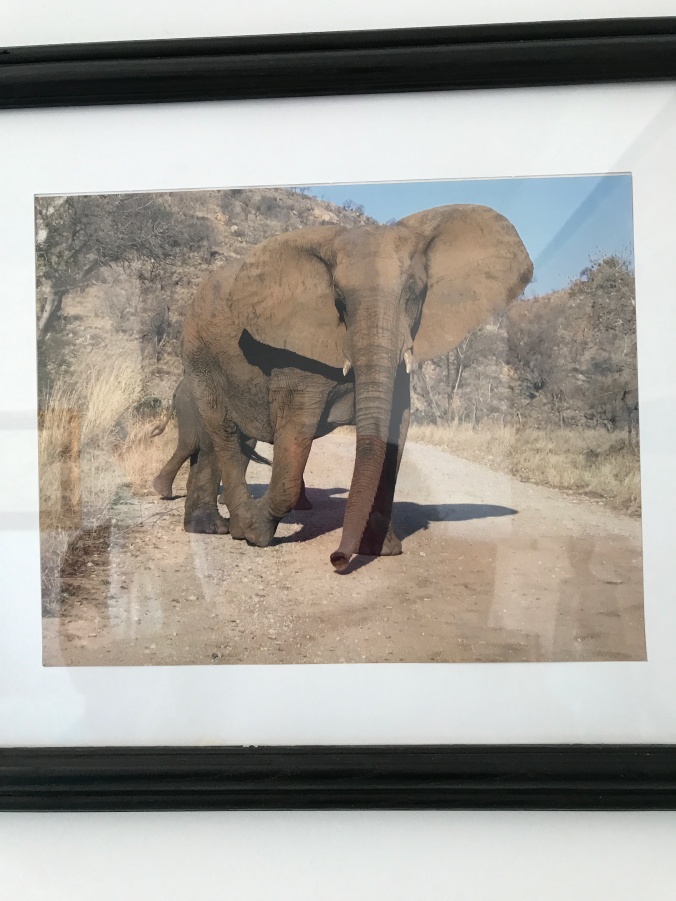 A photo Dina took of an elephant with it’s child, when they traveled to South Africa.
A photo Dina took of an elephant with it’s child, when they traveled to South Africa. A small elephant made out of cut pieces of Coca-cola and soda cans. This is typical of the recycled art made in South Africa of old tin cans and recycled products.
A small elephant made out of cut pieces of Coca-cola and soda cans. This is typical of the recycled art made in South Africa of old tin cans and recycled products. An assemblage made by their daughter when she was a child. Made from a soup ladle, a chop stick, a wash cloth, and a metal knitted scouring pad for hair (the same kind of scouring pads that my late father manufactured in his small shop in the Bronx when I was a child – I wrote about this last year).
An assemblage made by their daughter when she was a child. Made from a soup ladle, a chop stick, a wash cloth, and a metal knitted scouring pad for hair (the same kind of scouring pads that my late father manufactured in his small shop in the Bronx when I was a child – I wrote about this last year). An Egyptian painting of the goddess Isis on papyrus, hangs in their bedroom.
An Egyptian painting of the goddess Isis on papyrus, hangs in their bedroom.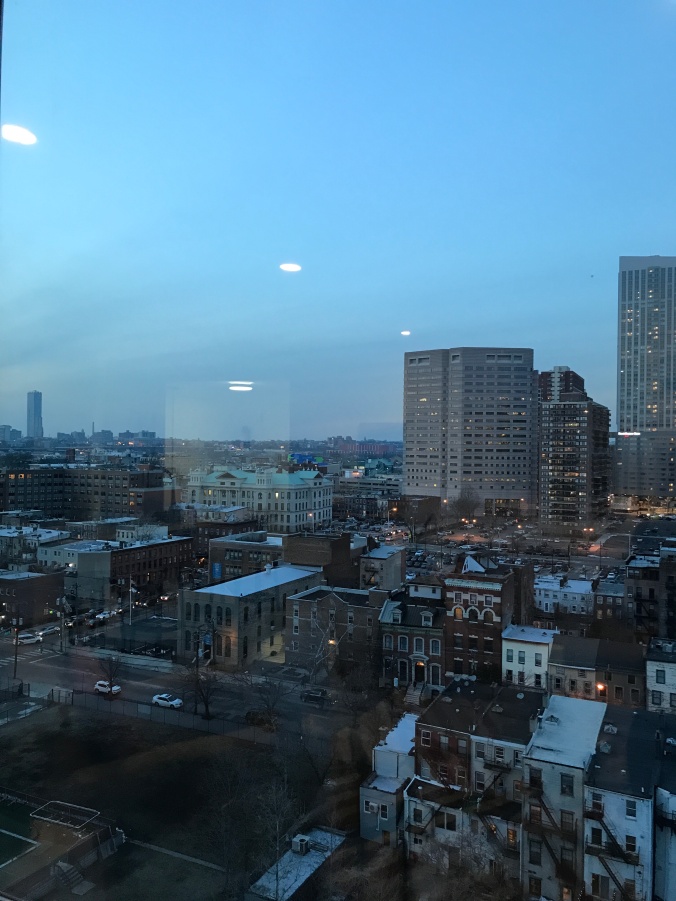

 My former student, David, whose mural I pass on the regular route, did write back to me, and has offered to visit. I warned him about what to expect. I am different, quite different. I snapped the photo of the right side of the mural which shows the old Maxwell House coffee sign. When I moved to this city over 40 years ago, they were still roasting coffee every morning and the whole town smelled like coffee. Now there is a vast condo development on the footprint where the Maxwell House coffee plant stood. Ruth who was my friend for eight months, but ended out friendship abruptly, lives in one of the apartments in the complex. I was happy to be greeted by her and have a friend to visit. Glad I could still walk there. I walk around this city now and remember who I was. Memories of taking my kids to the parks. Meeting friends at the restaurants. Listening to bands who became famous at Maxwell’s, the music venue/bar restaurant where Nirvana, R.E.M. and Oasis played. Where I heard The Bongos and Yo Lo Tengo. Where Bruce Springsteen used the restaurant as a stand-in for a Jersey Shore bar for his Glory Days video shoot.
My former student, David, whose mural I pass on the regular route, did write back to me, and has offered to visit. I warned him about what to expect. I am different, quite different. I snapped the photo of the right side of the mural which shows the old Maxwell House coffee sign. When I moved to this city over 40 years ago, they were still roasting coffee every morning and the whole town smelled like coffee. Now there is a vast condo development on the footprint where the Maxwell House coffee plant stood. Ruth who was my friend for eight months, but ended out friendship abruptly, lives in one of the apartments in the complex. I was happy to be greeted by her and have a friend to visit. Glad I could still walk there. I walk around this city now and remember who I was. Memories of taking my kids to the parks. Meeting friends at the restaurants. Listening to bands who became famous at Maxwell’s, the music venue/bar restaurant where Nirvana, R.E.M. and Oasis played. Where I heard The Bongos and Yo Lo Tengo. Where Bruce Springsteen used the restaurant as a stand-in for a Jersey Shore bar for his Glory Days video shoot.
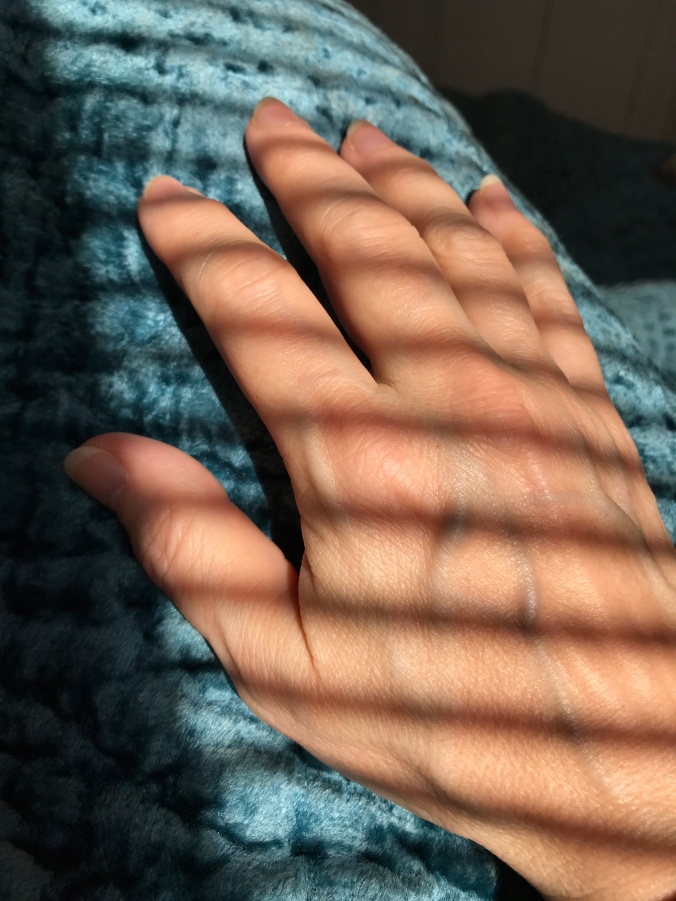
 Portrait of my husband, February 2019
Portrait of my husband, February 2019 Walking with Theresa my companion, last Thursday
Walking with Theresa my companion, last Thursday Children in the park with their dad, with their miniature golf sets
Children in the park with their dad, with their miniature golf sets A small terrace with a window/door emitting a luminescent pink light.
A small terrace with a window/door emitting a luminescent pink light.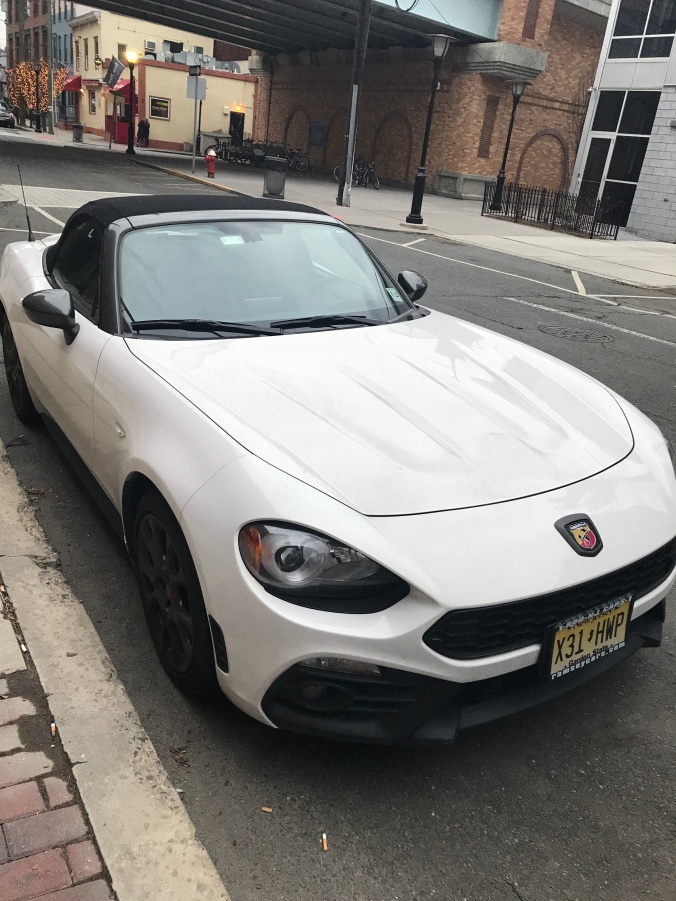 A white Fiat photographed before turning the corner.
A white Fiat photographed before turning the corner.

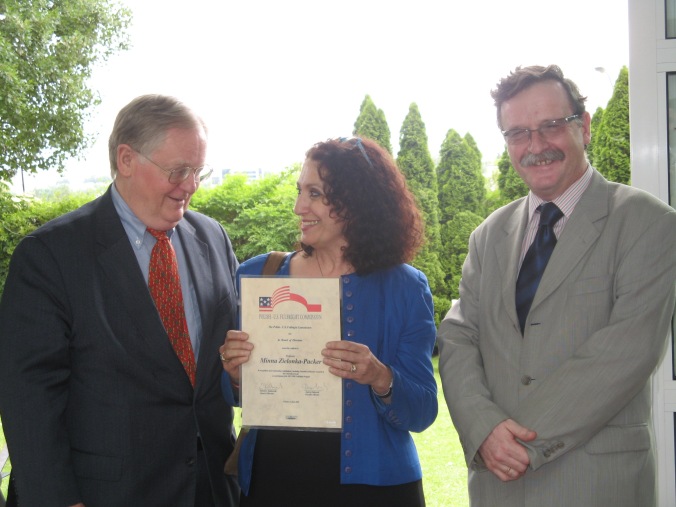 Happier days. 2008 as an American Fulbright to Poland.
Happier days. 2008 as an American Fulbright to Poland.






